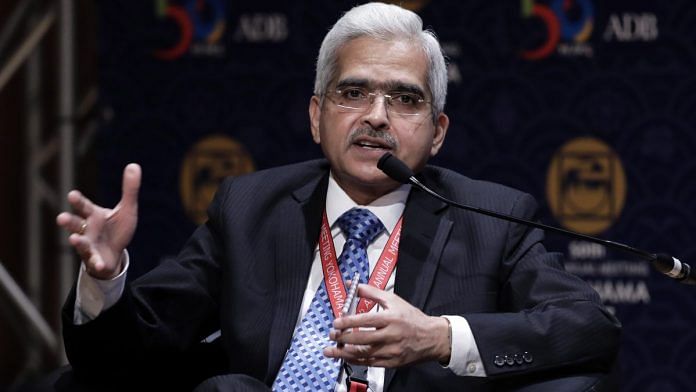New Delhi: The Reserve Bank of India (RBI) Thursday announced a cut in key policy rates by 25 basis points, a move that will aid the Narendra Modi government’s efforts to boost growth that fell to a five-year low in the quarter ended March.
The repo rate now stands at 5.75 per cent. Along with the rate cut, the central bank also changed its stance to “accommodative” from “neutral”.
The decision, taken unanimously by the six-member monetary policy committee (MPC), is the third consecutive rate cut by the central bank — the RBI had cut the repo rate by 25 basis points each in two monetary policy meetings in February and April.
The cut comes when India’s growth has slowed for the fourth consecutive quarter — to 5.8 per cent in the January-March period — led by a slowdown in both investment and consumption.
The full-year growth rate for 2018-19 is pegged at 6.8 per cent, marking the second consecutive year of a growth slowdown. India’s economy had grown at 7.2 per cent in 2017-18 and 8.2 per cent in 2016-17.
With inflation based on the consumer price index (CPI) remaining at less than 3 per cent in April, at 2.92 per cent, the central bank has more space to cut rates to support growth. Food inflation has also been lower at 1.1 per cent, though a wayward monsoon could add to the uncertainty.
“The MPC notes that growth impulses have weakened significantly as reflected in a further widening of the output gap compared to the April 2019 policy,” the RBI said in a statement.
“A sharp slowdown in investment activity along with a continuing moderation in private consumption growth is a matter of concern. The headline inflation trajectory remains below the target mandated to the MPC even after taking into account the expected transmission of the past two policy rate cuts,” it added.
“Hence, there is scope for the MPC to accommodate growth concerns by supporting efforts to boost aggregate demand, and in particular, reinvigorate private investment activity, while remaining consistent with its flexible inflation targeting mandate.”
The RBI also revised the growth projections for 2019-20 downwards to 7 per cent from 7.2 per cent projected in the April monetary policy statement. Citing the weakening in domestic investment activity and private consumption, especially in rural areas, the growth for first half of the fiscal is pegged at 6.4-6.7 per cent and for the second half at 7.2-7.5 per cent.
The RBI also marginally revised the inflation projections for 2019-20 to 3.0-3.1 per cent for the first half and to 3.4-3.7 per cent for the second half.
However, in a note of caution, the central bank added, “Risks around the baseline inflation trajectory emanate from uncertainties relating to the monsoon, unseasonal spikes in vegetable prices, international fuel prices and their pass-through to domestic prices, geo-political tensions, financial market volatility and the fiscal scenario.”
Also read: Interest rate cuts will make a difference only when they’re transmitted down the line
End consumers yet to get benefit
Transmission of the lower interest rates to the end consumer, however, remains a challenge.
Credit rating agency India Ratings and Research, in a note dated 5 June, said a rate cut is unlikely to stimulate demand in the economy due to the “absence of quick resonance in the financial market”.
It pointed out that despite a 50 basis-points rate cut by the RBI so far, banks have not lowered their lending or deposit rates, and that a number of them have instead raised deposit rates to mobilise funds.
“At the core of this mismatch between the RBI’s action and the banks’ inability to pass on the benefit to borrowers is the slowdown in household savings,” it said.
“Increased government borrowing and elevated small savings rate have rendered deposit/investment mobilisation by banks/NBFCs expensive.”
The transmission of the rate cut into the economy has emerged as a big challenge further complicated by the ongoing crisis in the banking and shadow-banking sectors, it added.
Also read: Modi govt overestimated nominal GDP, tax buoyancy. Result — huge tax collection shortfall
This report has been updated with additional information




Possibly for the first time, the market has cheered a rate cut by remaining in the red.